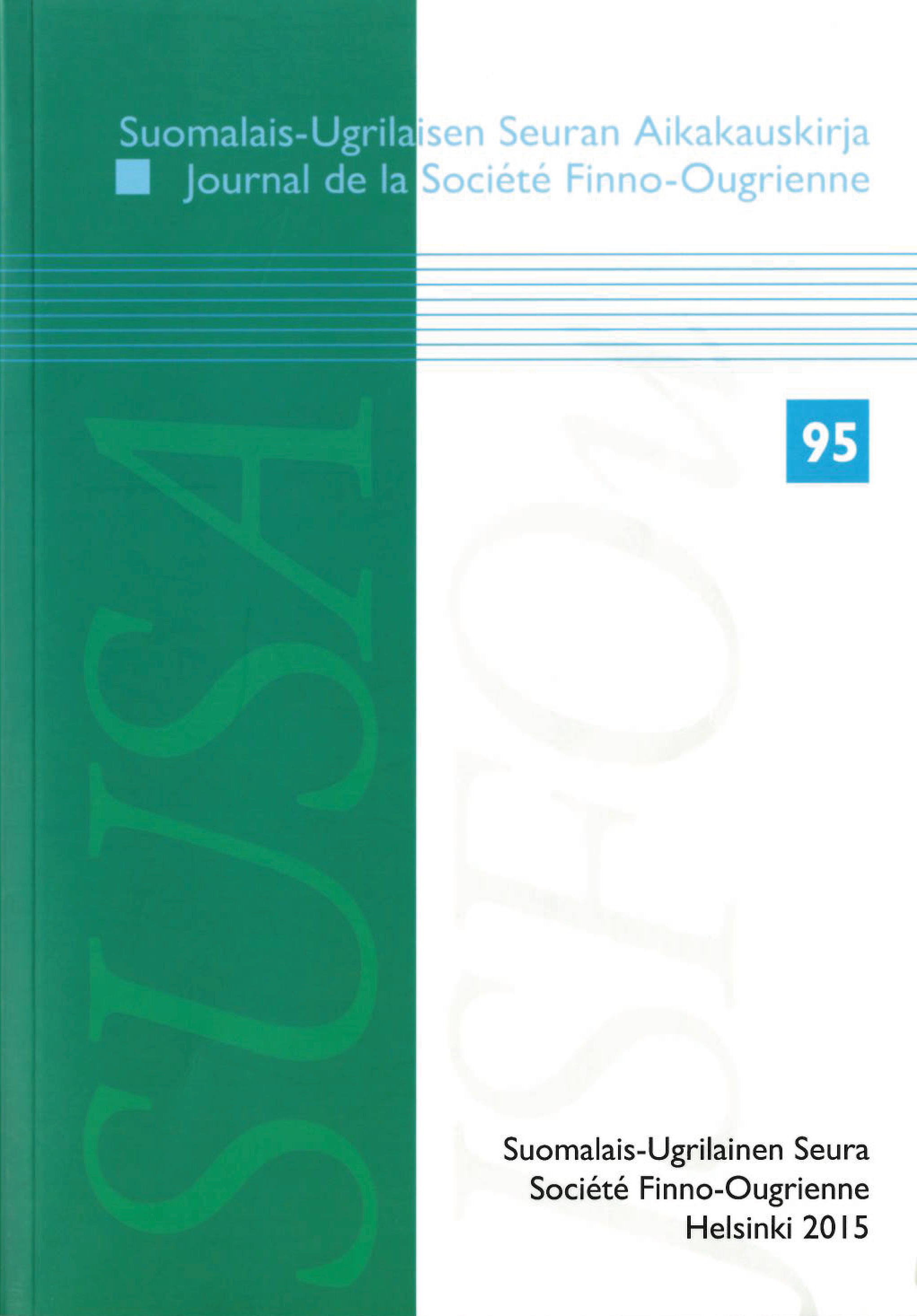Evaluating the Uralic–Yukaghiric word-initial, proto-sibilant correspondence rules
DOI:
https://doi.org/10.33340/susa.82648Abstrakti
This paper evaluates and expands upon previously suggested sound rules governing the phonological outcome of early root-initial proto-sibilants (*s- and *ś-) and proto-affricates (*š-, *ć- and *č-) in Late Proto-Yukaghir (PY), as shown by cognate correspondences in Proto-Uralic (PU) and by Tungusic and Turkic borrowings. The proto-sibilant *s- underwent deletion (*Ø-), retention (*s-) or lateralization (*l-); *ś- was retained unchanged and earlier *š- had changed into *č- in PY. Universally, PY proto-sibilants and proto-affricates find regular lexical correspondences in PU as described by a set of non-trivial phonological rules:
Pre-PY *sVr/k/γ- > PY *lVr/k/γ-: a regular lateralization of the sibilant in Yukaghiric occurred with back vowels and *-r-, *-k- and possibly *-γ-, but not *-q-, through an intermediary hypothetical *θ- stage.
Pre-PY *sVl/ŋ- > PY *ØVl/ŋ-: a sibilant deletion rule occurred with any vowel and *-l- or *- ŋ-.
However, all structures of the intermediate type Pre-PY *sV1ŋ/l/m/n-k/q-V2-, where V1 is a back vowel, pose an exception wherein sibilant deletion was blocked, and the sibilant was either retained or changed into a lateral. Sibilant deletion still occurred in these cases if V1 was a front vowel.
Pre-PY *ś- > PY *ś- > KY š- & TY s-: the Yukaghir lexicon in these cases likely developed through intermediate *š’-/*θ’- from Old Yukaghir. Furthermore, Pre-PY *š- > PY *č- regularly.
All of these sound changes are controlled by phonology and affect borrowings as well as inherited vocabulary from before PY, but do not affect post-PY borrowings. The sibilant-deletion rule is clearly an influence from extensive language contacts with Yakut-speakers, and certain roots show that the Yukaghir rules of synharmonism were already in effect prior to sibilant deletion. In addition, the results are concurrent with several older cognate suggestions between Uralic and Yukaghiric and further add to this corpus. Identifying these historical processes also strengthens the evidence that the Yukaghir languages are genetically related to the Uralic language family.





